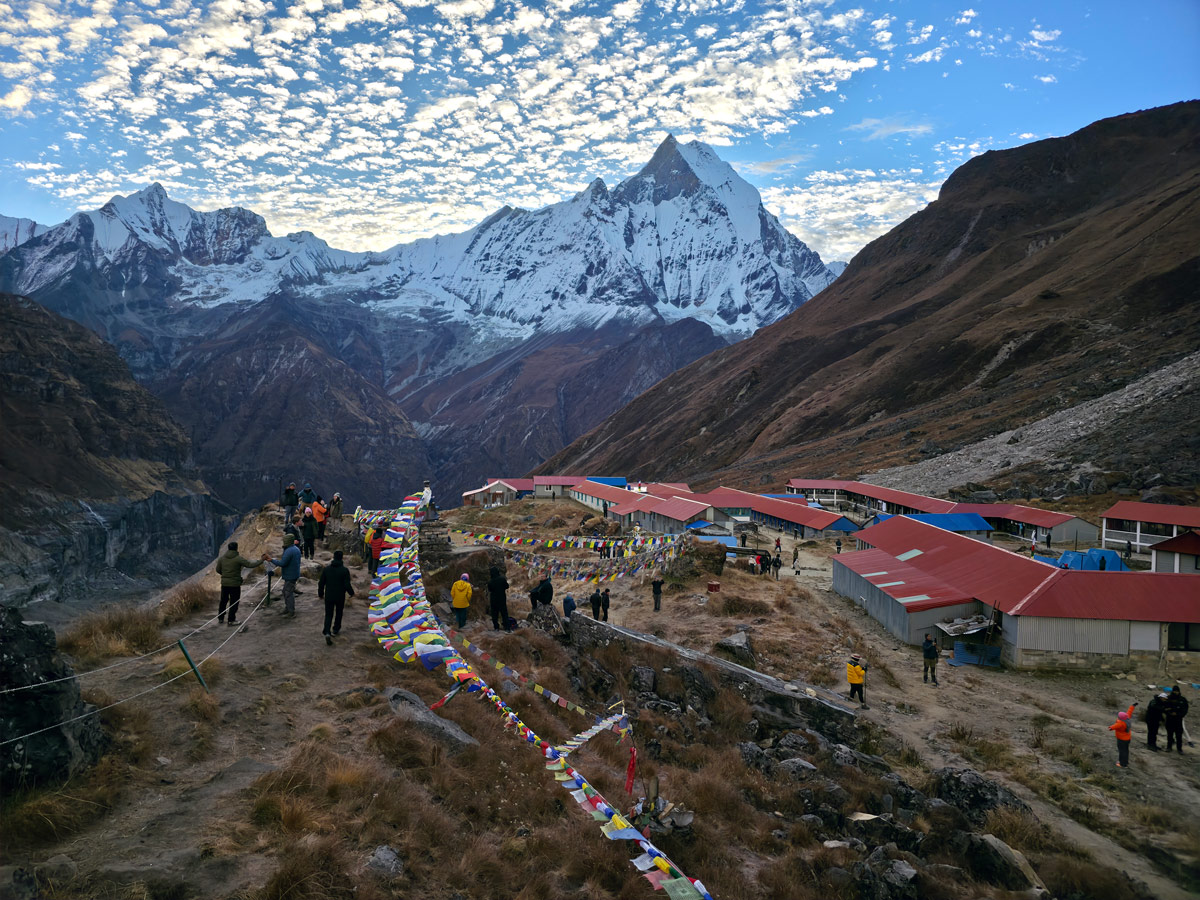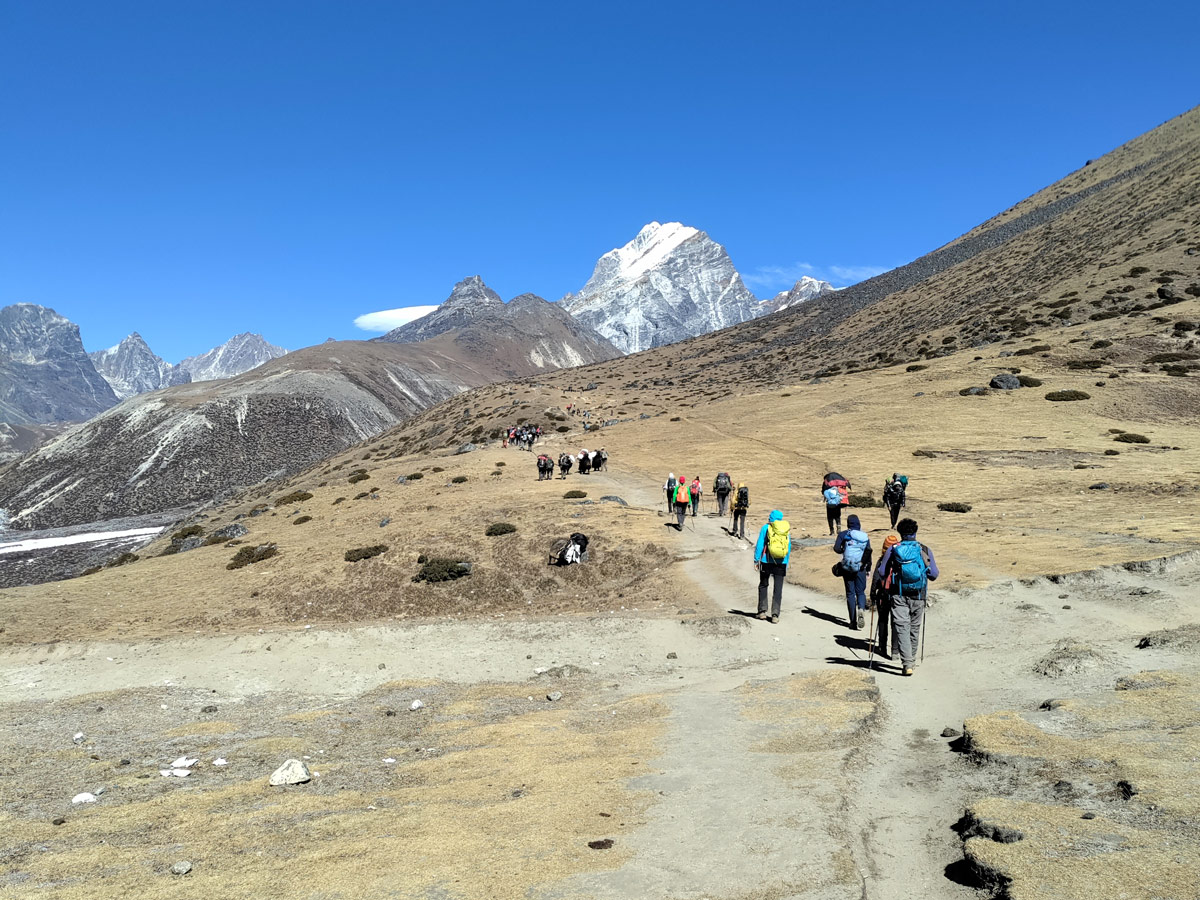If you have ever explored trekking in Nepal, you must have heard about the culture of teahouse trekking. This experience has been described by many as the best way to explore the trekking trails of Nepal. But what makes it so special?
This blog focuses on clearing the most common myths about teahouse trekking in Nepal so that you can plan your Himalayan journey with confidence.
Honestly, who would not love the idea of exploring the stunning Himalayan trails of Nepal while being surrounded by breathtaking scenery, all without having to carry the heavy burden of camping equipment? That is the real beauty of teahouse trekking.
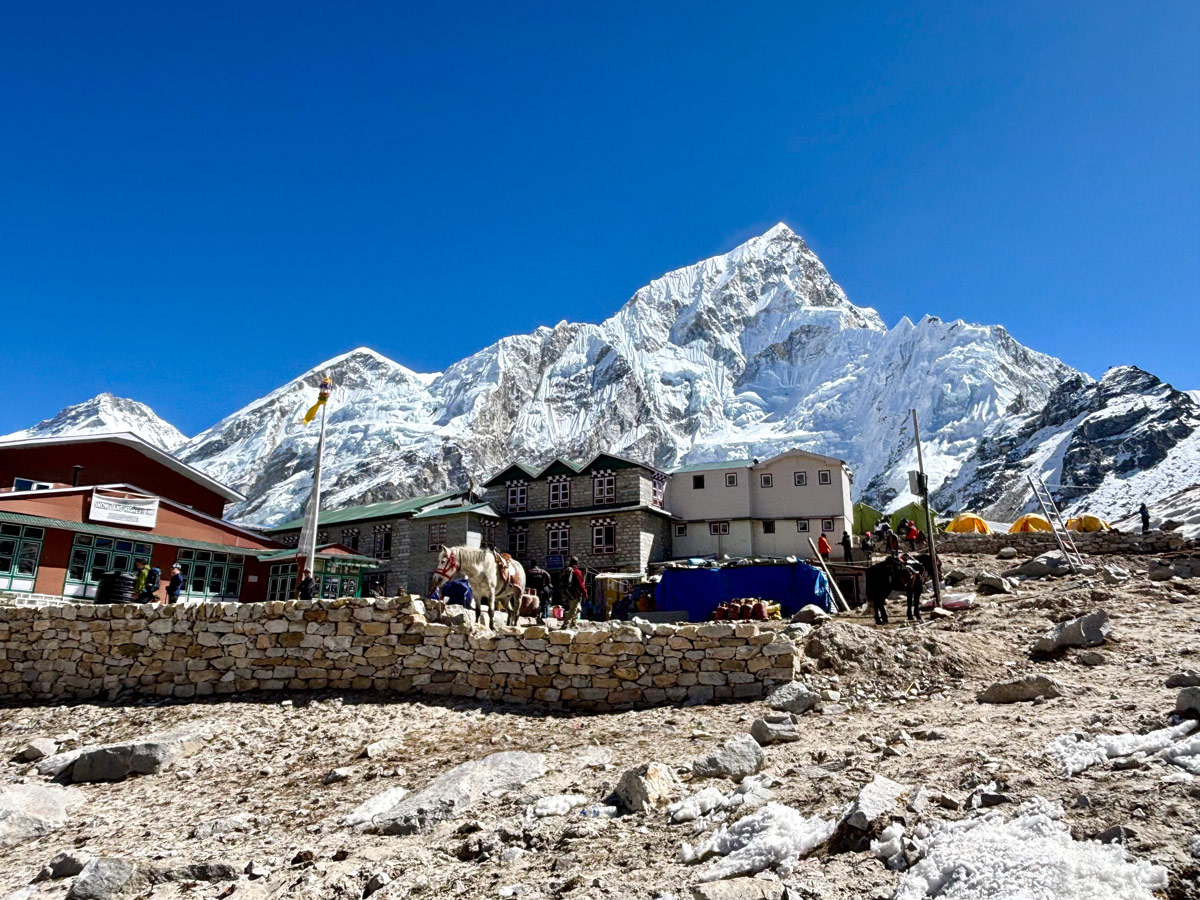
Teahouses are commonly known as guesthouses or lodges, and these terms can be used interchangeably in the context of trekking in Nepal. They are the heart of the trekking experience, providing food, accommodation, and warm hospitality along the trails.
However, as a first-time trekker, you may come across several misconceptions and myths about what teahouse trekking is really like. These myths often create unnecessary uncertainty or confusion for beginners. So, let us clear things up once and for all.
In this blog, we focus on Debunking Teahouse Trekking Myths in Nepal to help trekkers understand the real experience awaiting them on the trails.
Understanding Teahouse Trekking
Teahouses are simple yet welcoming lodges that provide accommodation and meals along the most popular trekking routes in Nepal. They are more than just places to sleep; they are cultural and social centers where travelers, guides, and locals come together.
The word “teahouse” might sound modest, but these establishments play a vital role in supporting local tourism and economies. Historically, they started as small shelters where traders and travelers could rest and have a cup of tea. Over time, as trekking in Nepal gained international recognition, these teahouses evolved into comfortable lodges with improved facilities and services.
Most teahouses are family-run businesses. The income they earn helps support entire communities, ensuring that tourism benefits local people directly. You will find teahouses along almost every famous trekking route, including the Everest Base Camp trek, Annapurna Circuit trek, Langtang Valley trek, and Manaslu Circuit trek.

In the lower-altitude regions, the quality of accommodation is generally better, with more options and facilities available. You will often find rooms with private bathrooms, hot showers, and comfortable bedding.
However, as you ascend to higher altitudes, the lodges gradually become more basic due to limited access to building materials and supplies. Even so, teahouse owners do their best to maintain cleanliness, warmth, and hospitality.
Each region offers its unique charm, but the core teahouse experience remains consistent: a warm bed, hearty home-cooked meals, and meaningful conversations with other trekkers and locals.
Whether you are sitting around a stove in a dining room sharing stories or enjoying morning tea with mountain views, the connections you build in teahouses often become some of the most memorable parts of your journey.
By understanding how these guesthouses work, it becomes easier to see why so many myths about teahouse trekking in Nepal exist among first-time visitors.
Myth 1: Are Teahouses Really Basic and Uncomfortable?
One of the most common myths about teahouse trekking is that teahouses are extremely basic and uncomfortable, almost like makeshift huts. The word “teahouse” might bring to mind an image of a small wooden shack offering nothing but shelter from the wind. However, that is far from the truth.
Yes, in some very remote areas, accommodation might be simple, but on popular trails like Everest Base Camp or Annapurna Circuit, teahouses are well-maintained, clean, and surprisingly cozy. Many offer rooms with beds, blankets, pillows, and clean sheets. Dining halls are often designed with wooden interiors and a central stove that keeps everyone warm.
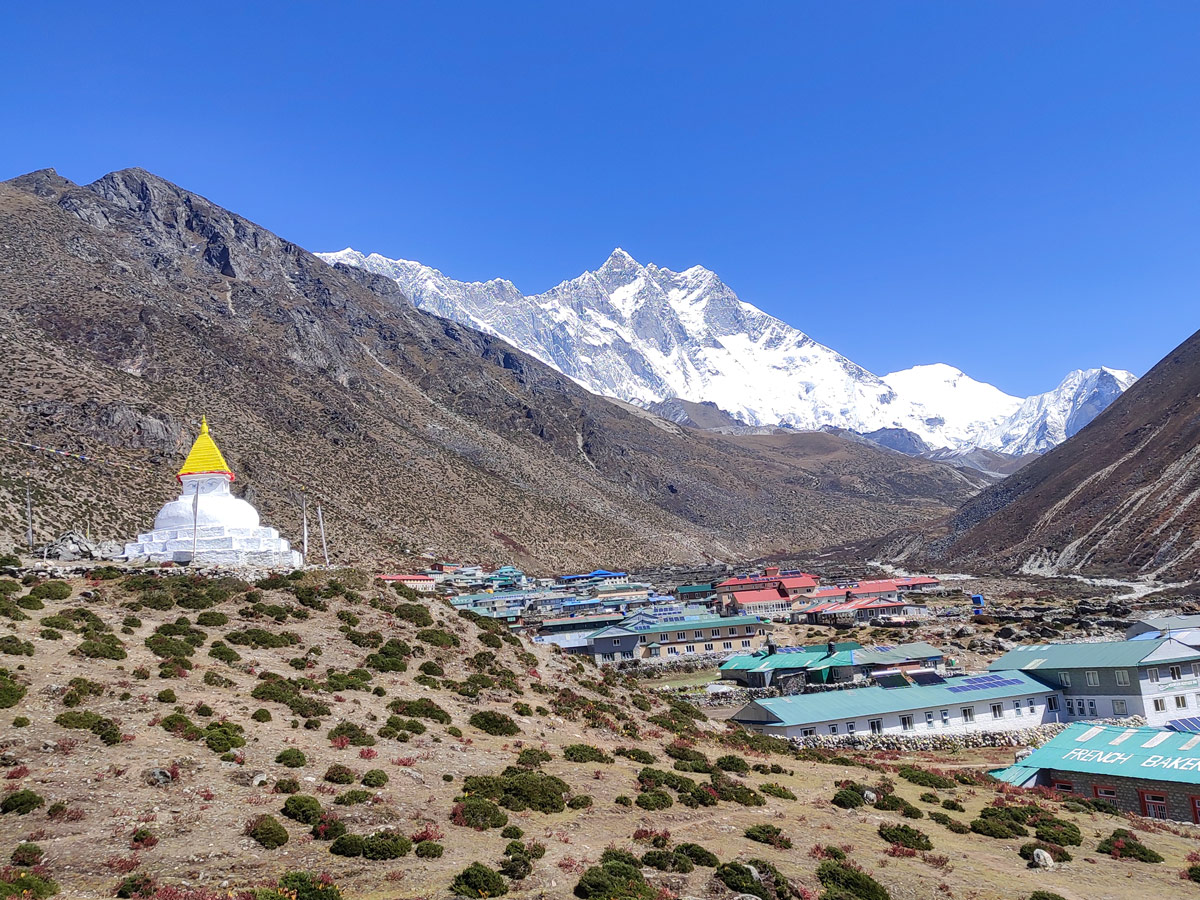
Some teahouses even provide private bathrooms, hot showers, and charging facilities. In more developed trekking areas such as the Everest and lower Annapurna regions, you can even find lodges equipped with electric blankets, Wi-Fi, and western-style toilets.
Teahouse trekking is designed to make your experience both adventurous and comfortable. You get a good night’s rest, delicious food, and a safe environment, all while enjoying the authenticity of the Himalayas. Even at higher altitudes, where facilities become more basic, teahouse owners ensure trekkers have everything they need to feel at home.
So, no, teahouses are not just rough shelters. They are cozy mountain lodges that combine comfort with authenticity.
Myth 2: Is the Food Limited and Unsafe?
Another widely spread myth is that food options in teahouses are limited and unsafe for foreigners. Many people imagine being served only Dal Bhat every single day. While Dal Bhat (rice, lentils, and curry) is indeed the national staple and a must-try, teahouses offer a much wider selection of meals than you might expect.
You will find diverse menus that include both local and international options. Breakfasts often feature pancakes, porridge, eggs, chapati, muesli, or Tibetan bread.
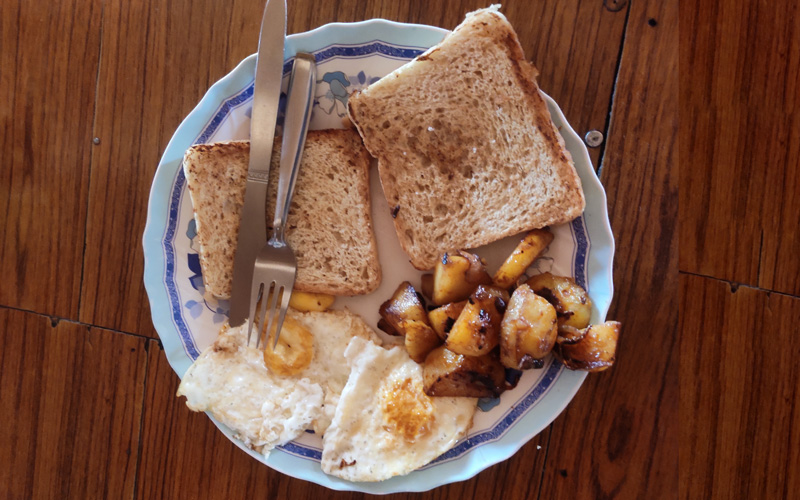
Lunch and dinner menus commonly include noodles, pasta, momos (Nepalese dumplings), fried rice, soups, and potato dishes. In more popular trekking regions, you can even find pizza, apple pie, or chocolate cake prepared in traditional wood-fired ovens.
The food is usually prepared fresh from locally sourced ingredients. Hygiene standards are taken seriously, especially in the more popular lodges. To stay on the safe side, many experienced trekkers recommend eating vegetarian dishes since meat has to be carried up from lower altitudes, which can make it less fresh.
Contrary to what some think, you will not be starving or struggling to find a proper meal on your trek. Instead, you will be well-fed, energized, and delighted by the taste and variety of Nepalese mountain cuisine.
Myth 3: Do You Need to Carry a Tent and Trekking Gear?
Many first-time trekkers assume that they must carry heavy camping gear or tents during their trek. This belief likely comes from confusion between camping treks and teahouse treks.
The entire purpose of teahouse trekking is to make your journey easier by eliminating the need to carry camping equipment. Teahouses provide accommodation, meals, and often even charging points and internet access. This allows you to travel light with only the essentials like clothing, water, and personal items.
Only in the most remote and less-developed regions, such as Upper Dolpo or the Dhaulagiri Circuit, might camping still be required due to limited teahouse availability. On all major trekking routes, however, you can complete your entire journey comfortably while staying in teahouses.
This convenience is one of the main reasons why teahouse trekking in Nepal is so popular. You can enjoy the raw beauty of the mountains without the physical burden of carrying tents, stoves, and cooking utensils.
Myth 4: Is Teahouse Trekking Only for Budget Travelers?
Many travelers assume that teahouse trekking is only suitable for those traveling on a tight budget. In reality, teahouses cater to every kind of traveler. Whether you are looking for a simple, authentic mountain experience or a more luxurious stay, there are plenty of options available.
At one end of the spectrum, you have budget-friendly teahouses with shared rooms, basic amenities, and simple but delicious meals. At the other end, you can find mid-range and luxury teahouses that offer private rooms with attached bathrooms, hot showers, heating, and even Wi-Fi access.
In fact, luxury versions of classic treks such as the Everest Base Camp Luxury Trek or the Annapurna Foothills Luxury Trek are becoming increasingly popular. In these, you can enjoy facilities like electric blankets, soft bedding, and heated dining rooms while still experiencing authentic Himalayan culture.
Luxury lodges are more common in areas like the Everest and lower Annapurna regions. In contrast, remote trails such as Manaslu or Langtang are still developing in this regard. The beauty of the teahouse system lies in its flexibility. No matter your budget or comfort level, you can always find an option that suits you perfectly.
Myth 5: Are Teahouses Always Crowded and Overbooked?
You might have heard stories of trekkers arriving at teahouses only to find them completely full. While such cases can occur, they usually happen during the peak trekking seasons in Nepal, which are spring (March to May) and autumn (September to November).
During these months, popular routes like the Everest Base Camp trail or the Annapurna Circuit attract thousands of trekkers from around the world. Naturally, the most well-known teahouses can get crowded, especially in smaller villages where there are fewer lodges.
However, this does not mean that every teahouse is always full. Most regions have plenty of accommodation options, and with proper planning, you will always find a place to stay. Booking in advance or traveling with an experienced trekking company like Ace the Himalaya ensures that your accommodation is reserved beforehand.
If you prefer a quieter experience, trekking during the off-season (winter or summer) is an excellent option. You will enjoy fewer crowds, lower prices, and a more peaceful environment. Alternatively, you can explore less-traveled routes where teahouses are still available but with fewer trekkers around.
So while peak season can be busy, the idea that teahouses are always overcrowded is an exaggeration. Smart planning and local support make all the difference.
Myth 6: Are Teahouses Unsafe for Solo Trekkers?
Some travelers, particularly solo or female trekkers, worry that staying in teahouses might be unsafe. This concern is understandable, but in practice, it is largely unfounded.
Nepal is considered one of the safest trekking destinations in the world. The people are known for their kindness and hospitality. Most teahouses are run by families who treat their guests like friends or relatives.
As a solo traveler, you will likely meet other trekkers along the way, forming groups naturally during meals or while walking. The trails themselves are well-marked, and many have checkpoints where trekkers must register their permits, adding an extra layer of security.
For additional safety, you can always stay in well-reviewed teahouses, travel with a guide, or share your itinerary with someone you trust. If you are trekking with Ace the Himalaya, their guides ensure that solo trekkers are safe, comfortable, and well-accompanied.
Female trekkers also report feeling comfortable in teahouses because the local culture values respect and hospitality. The sense of community on the trails is strong, and you will rarely feel alone or unsafe.
Myth 7: Will You Be Completely Disconnected from the World?
Many trekkers assume that once they enter the mountains, they will lose all connection to the outside world. While this was true a decade ago, it is no longer the case.
Technological improvements have made connectivity possible in almost every major trekking region in Nepal. Electricity is available in most teahouses, though at higher altitudes it often comes from solar panels. While power can sometimes be limited, you can still charge your phone, camera, or power bank for a small fee.
Wi-Fi is now common even in high-altitude routes such as Everest Base Camp, Annapurna Base Camp. The quality may vary, but it is enough to stay in touch with loved ones or check weather updates. Additionally, local SIM cards from Ncell, NTC, or Everest Link offer mobile data coverage along many trekking routes.
If staying connected is important to you, consider carrying a small solar charger or power bank and purchasing a local SIM card with data. This way, you can enjoy the serenity of the mountains without feeling completely isolated from the rest of the world.
So, while the Himalayas still provide an escape from the digital rush, you are never truly cut off from communication or safety support.
Myth 8: Do All Teahouses Provide the Same Experience?
It is a mistake to assume that all teahouses are alike. In fact, the teahouse experience varies greatly depending on several factors such as location, altitude, season, and the region’s local culture.
In well-developed trekking areas like Everest Base Camp and Annapurna Base Camp, teahouses are relatively modern and comfortable. They may have Wi-Fi, attached bathrooms, and restaurant-style dining. In contrast, in less developed areas like Manaslu Circuit or Kanchenjunga, teahouses are simpler, offering a more rustic and authentic experience.
Altitude also plays a significant role. The higher you go, the more expensive and limited things become due to the difficulty of transporting supplies. Still, even at high elevations, you can expect hospitality, warm meals, and a welcoming smile.
Cultural diversity also shapes the experience. For example, Sherpa teahouses in the Everest region often serve Tibetan-influenced dishes and feature Buddhist décor, while Gurung or Thakali teahouses in the Annapurna region highlight their own traditional cuisines and designs.
Every region, every village, and sometimes even every family brings its own charm to the teahouse experience, making each stay unique and memorable.
Myth 9: Must You Speak Nepali to Stay in Teahouses?
Many travelers believe that they must speak fluent Nepali to communicate effectively in teahouses. This could not be further from the truth.
Nepal is a country that thrives on tourism. Most people working in teahouses, especially along popular trails, speak basic English quite well. They are used to interacting with trekkers from all over the world, so communication is rarely a problem.
Teahouse owners and staff understand the needs of foreign visitors. They know common phrases and are often eager to engage in small talk or help with directions. If you are trekking with Ace the Himalaya, your guide will assist you in communicating smoothly and ensuring that your stay is easy and enjoyable.
That said, learning a few simple Nepali phrases can add warmth to your experience. Saying “Namaste” for hello or “Dhanyabad” for thank you shows respect and appreciation, and locals genuinely value the effort. It helps bridge cultural gaps and often leads to friendly smiles and laughter.
So, while fluency in Nepali is not necessary, a few basic words can enrich your journey and create meaningful connections with the local people.
Myth 10: Is Teahouse Trekking Not Eco-Friendly?
Another misconception is that teahouse trekking harms the environment and that camping is the only sustainable way to explore the Himalayas. In reality, the opposite is true.
Teahouses in Nepal are deeply integrated into the local environment and community. They support sustainable tourism by using local materials, hiring local staff, and sourcing food locally. Many teahouses rely on solar power for electricity, especially in higher altitudes where access to other energy sources is limited.
Waste management is also improving significantly. Most teahouses have bins for proper disposal, and many encourage trekkers to carry out their waste rather than leave it behind. They promote the use of reusable bottles and discourage plastic packaging.
By staying in teahouses, you contribute directly to the local economy and help reduce the environmental footprint associated with camping logistics. Camping requires carrying tents, gas stoves, and extra supplies, which often increases waste and fuel use.
Trekking companies like Ace the Himalaya also follow strict environmental guidelines. They provide garbage bags for trekkers to collect and carry out their waste and encourage the use of filtered water or purification tablets instead of buying bottled water. These small actions together make a big difference in preserving Nepal’s fragile mountain ecosystems.
If you travel responsibly, respect local customs, and minimize waste, teahouse trekking can be one of the most sustainable forms of adventure travel in the Himalayas.
Final Thoughts: Why Teahouse Trekking is Truly Unique
Teahouse trekking in Nepal is more than just a convenient way to explore the Himalayas. It is a cultural experience, an opportunity to connect deeply with local communities, and a comfortable yet authentic adventure.
From cozy lodges offering hot soup after a long day’s walk to the heartwarming hospitality of Nepalese families, teahouses capture the essence of what makes trekking in Nepal unforgettable. They allow trekkers to enjoy the trails without worrying about logistics, while still experiencing life in the mountains as it truly is.
The myths surrounding teahouse trekking often come from outdated information or misconceptions. In reality, teahouses are evolving, becoming more comfortable, and continuously adapting to meet the needs of global travelers.
Whether you are a solo adventurer, a group of friends, or a family seeking a Himalayan journey, teahouse trekking offers flexibility, safety, and comfort for everyone. You will eat well, sleep warmly, and create lasting friendships along the way.
So, next time you plan your trek in Nepal, leave the myths behind and embrace the real experience. Let the teahouses of Nepal welcome you with open arms, steaming cups of tea, and stories that will stay with you forever.
Debunking Teahouse Trekking Myths in Nepal shows that these lodges offer more than shelter, they represent warmth, culture, and genuine Nepalese hospitality.
